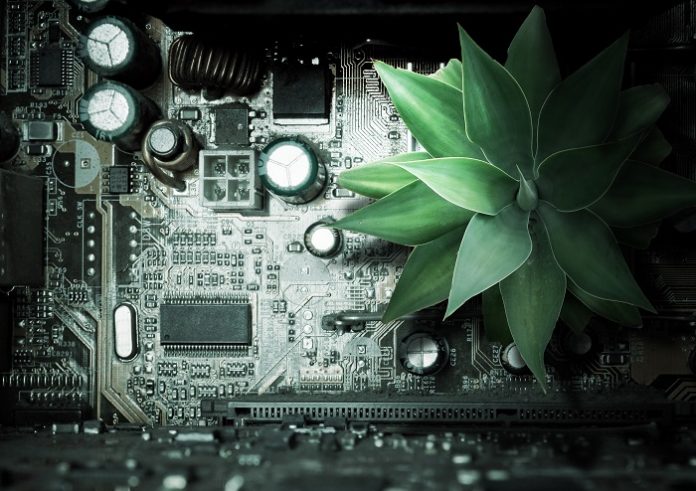Researchers at Duke University have created transistors with three carbon-based inks. The all-carbon thin-film transistors were made using crystalline nanocellulose as a dielectric, carbon nanotubes as a semiconductor, graphene as a conductor, and paper as a substrate. This type of component could assist in addressing the environmental problem of the accumulation of electronics that are non-recyclable.
Silicon-based computer components are probably never going away and we don’t expect easily recyclable electronics like ours to replace the technology and devices that are already widely used. But we hope that by creating new, fully recyclable, easily printed electronics and showing what they can do, that they might become widely used in future applications.
Franklin and his colleagues used carbon nanotubes (for the semiconductors) and graphene (for the conductors) inks to create a recyclable transistor that can be printed on paper. While these materials have been used in printed electronics, the path to recyclability was only cleared with the development of a wood-derived insulating dielectric ink, nanocellulose.
Nanocellulose is biodegradable and has been used in applications like the packaging for years. While people have long known about its potential applications as an insulator in electronics, nobody has figured out how to use it in printable ink before. That’s one of the keys to making these fully recyclable devices functional.
The researchers found a technique for suspending nanocellulose crystals extracted from wood fibers that – with a sprinkling of salt – yields an ink that performs well as an insulator in their printed transistors. Their transistors can be created from the three carbon-based inks using an aerosol jet printer and remain usable in a variety of applications even six months later.
They demonstrated the recyclability of their transistors by submerging them in a series of baths, vibrating them with sound waves, and centrifuging the resulting solution; the carbon nanotubes and graphene are sequentially recovered with an average yield of nearly 100%. The materials can then be reused in the same printing process while losing little performance viability. Meanwhile, the nanocellulose, being derived from wood, can be recycled along with the paper substrate.
By initially demonstrating this fully recyclable, multifunctional printed transistor, the researchers hope to make the first step toward their technique being used commercially to manufacture simple devices. For instance, Franklin says the technology could be used in a large building that requires thousands of simple environmental sensors to monitor energy use or in custom biosensing patches for medical monitoring.
Recyclable electronics like this aren’t going to go out and replace an entire half-trillion-dollar industry by any means and we’re certainly nowhere near printing recyclable computer processors, but demonstrating these types of new materials and their functionality is hopefully a stepping stone in the right direction for a new type of electronics lifecycle.








